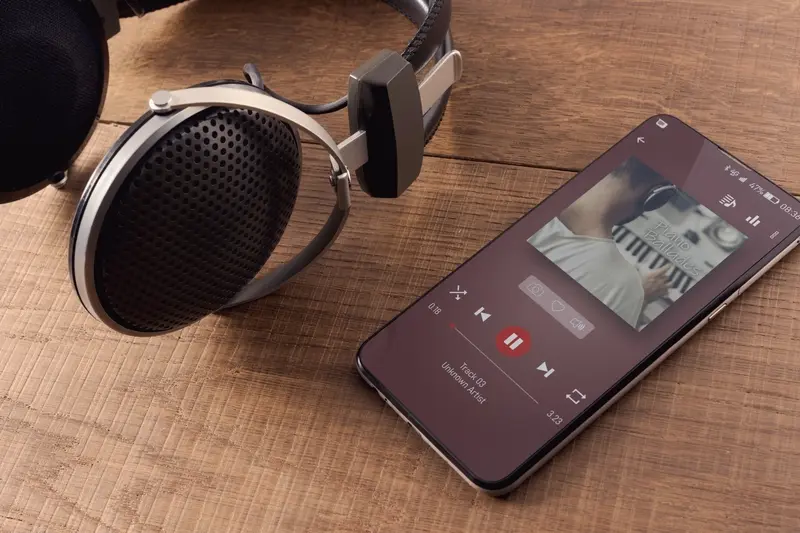What Makes Push Notifications Cheap or Expensive to Build?
Why do some apps spend hundreds on push notifications whilst others manage to build them for next to nothing? It's a question that comes up in almost every client conversation I have these days. The answer isn't straightforward—and that's precisely the problem most people face when budgeting for notification features.
Push notifications seem simple on the surface, don't they? You write a message, hit send, and your users get a little ping on their phones. But here's the thing—what looks like a basic feature can range from £500 to £50,000 depending on what you're actually trying to achieve. I've seen startups blow their entire development budget on notification systems they didn't need, and I've watched established companies struggle with cheap solutions that couldn't handle their user base.
The difference between a basic notification system and a sophisticated one isn't just the price tag—it's whether your users will actually engage with what you're sending them
The mobile landscape has changed dramatically since push notifications first appeared. Users now expect personalised, relevant messages that add genuine value to their experience. They want notifications that understand their preferences, respect their time zones, and deliver content that matters to them personally. This shift from broadcast messaging to intelligent, targeted communication is what's driving the complexity—and the costs—of modern notification systems. Understanding these cost drivers before you start building can save you thousands and help you make the right choices for your specific needs.
The Basic Push Notification System
Right, let's start with the basics. A simple push notification system is actually quite straightforward—you've got your app, a messaging service, and the user's device. That's it. The app registers for notifications, your backend sends a message through Apple's Push Notification Service (APNs) or Google's Firebase Cloud Messaging (FCM), and boom—notification appears on the user's screen.
For a basic setup, you're looking at maybe £2,000-£5,000 to get everything working properly. I mean, that covers the fundamental plumbing: setting up the certificates, configuring your server to talk to Apple and Google's services, and building a simple admin panel where you can compose and send messages. Nothing fancy, just the core functionality that lets you reach your users.
The thing is, even a "basic" system needs some thought. You'll need to handle device tokens (these change more often than you'd think), manage delivery failures, and deal with users who've deleted your app but are still in your database. Actually, that last bit catches a lot of people out—sending notifications to dead tokens can get expensive quickly if you're not careful about cleanup.
Here's what genuinely surprises most clients: the notification itself is free to send through Apple and Google's services. The costs come from your server infrastructure, the time spent building the admin tools, and honestly, all the edge cases you discover once real users start receiving your messages. But for a straightforward "send the same message to everyone" system? It's really not that expensive to build.
Simple Text Messages vs Rich Media Notifications
Right, let's talk about the difference between basic text notifications and the fancy rich media ones. This is where development costs can really start to climb, and honestly, it's one of the first places where clients' eyes light up with possibilities—and budgets start getting stretched!
Simple text notifications are exactly what they sound like. A short message, maybe a title, and that's it. These are dead simple to implement; you're basically just sending a string of text through the notification service. Most developers can knock these out in a few hours, and the ongoing costs are minimal since you're not storing or processing much data.
But rich media notifications? That's a whole different beast. We're talking about images, videos, interactive buttons, custom layouts, and sometimes even mini-applications within the notification itself. Each of these elements needs to be designed, stored somewhere (hello, server costs!), and delivered efficiently to millions of devices without making your app crash.
Start with simple text notifications to validate your messaging strategy before investing in rich media features. You can always upgrade later once you know what resonates with users.
What Makes Rich Media Expensive
The complexity comes from several places. First, you need storage for all those images and videos—and trust me, media files add up quickly. Then there's the bandwidth costs every time someone receives a notification with a 2MB image attached. Plus, different devices handle rich media differently, so you're looking at more testing time and potentially custom code for various screen sizes and operating system versions.
- Media storage and hosting costs
- Additional bandwidth usage
- Complex testing across devices
- Custom design and development work
- Image optimisation and compression
The real kicker? Rich media notifications perform better in terms of engagement, but they're not always necessary. Sometimes a well-crafted text message actually outperforms a flashy image-heavy notification because it loads faster and feels less intrusive to users.
Targeting and Personalisation Features
Here's where things get interesting—and expensive. Basic push notifications that go to everyone are cheap to build; ones that know exactly who you are and what you want? That's a different story entirely.
The simplest targeting is geographic. "Send this offer to everyone in London" is straightforward enough. Your notification service checks the user's location data and fires away. But once you start layering conditions—"send to users in London who haven't opened the app in 3 days and have previously bought shoes"—you're looking at much more complex infrastructure.
User Segmentation Complexity
Real personalisation means your app needs to track and store loads of user data. Purchase history, browsing behaviour, app usage patterns, demographic info—all of this needs collecting, processing, and organising into actionable segments. And honestly? The database queries alone can slow things down if you're not careful with the architecture.
Dynamic content makes it even trickier. Instead of "Check out our sale!" you want "Hi Sarah, those Nike trainers you looked at are now 20% off." That means your notification system needs to pull user names, remember what they viewed, check current prices, and personalise the message in real-time before sending.
The Cost Breakdown
Here's what drives up the price:
- User behaviour tracking systems and analytics
- Database storage for all that personal data
- Processing power to run complex segmentation queries
- APIs to pull dynamic content (pricing, inventory, recommendations)
- A/B testing tools to optimise message performance
- Machine learning algorithms for predictive targeting
The more sophisticated your targeting gets, the more moving parts you have. And more moving parts means more development time, more testing, and frankly, more things that can go wrong. But when it works? The engagement rates make all that complexity worthwhile. If you're looking to implement this kind of personalised push notification system, expect a significant jump in development complexity.
Platform Differences Between iOS and Android
Right, let's talk about something that catches a lot of people off guard—the fact that iOS and Android handle push notifications completely differently. I mean, they both send messages to your phone, but that's where the similarities end really.
Apple has their own Apple Push Notification service (APNs) which is pretty straightforward but has its quirks. You need proper certificates, and if you mess up the configuration it can be a right pain to debug. Android uses Firebase Cloud Messaging (FCM), which replaced Google Cloud Messaging a few years back. The good news? FCM is generally more forgiving and easier to work with.
Development Time Differences
Here's where costs start to add up. iOS notifications require specific handling for different notification types—you can't just copy-paste your Android code. Rich notifications work differently on each platform; what looks perfect on Android might break completely on iOS. And don't get me started on notification actions and interactive buttons—they need separate implementations.
The biggest cost driver isn't the platforms themselves, but the time needed to test and optimise notifications for each one properly
Testing Complexity
Testing is where things get expensive quickly. You need actual devices for proper testing because simulators dont handle push notifications the same way. iOS has different behaviours depending on whether the app is in foreground, background, or completely closed. Android's notification channels (introduced in API 26) add another layer of complexity that needs testing across different OS versions.
Most development teams underestimate this—they budget for building the feature once, but end up spending nearly double the time dealing with platform-specific issues and edge cases. That's why experienced developers always factor in extra time for cross-platform notification work. Understanding these differences between iOS and Android platforms is crucial for proper budget planning.
Backend Infrastructure and Third-Party Services
The backend is where push notification costs can really spiral out of control if you're not careful. I mean, you've got to think about servers, databases, message queues—the whole lot. And honestly, most people underestimate just how much infrastructure you need to handle push notifications properly.
Here's the thing about push notification services: they're not just about sending a message and forgetting it. You need systems that can handle delivery receipts, retry failed messages, manage user tokens, and store notification history. That's a lot of moving parts, and each one costs money to run and maintain.
Third-Party Service Costs
Most apps use services like Firebase Cloud Messaging, Amazon SNS, or Pusher to handle the heavy lifting. The pricing varies quite a bit:
- Firebase FCM is free for basic usage but you'll pay for Firebase Analytics and other features
- Amazon SNS charges per million messages—starts cheap but adds up with volume
- OneSignal offers generous free tiers but premium features cost extra
- Custom solutions require server costs, database storage, and developer time
The real cost driver? Scale. Sending 1,000 notifications per month is practically free with most services. But when you're looking at millions of users receiving multiple notifications daily, those costs add up fast. I've seen clients shocked when their notification bill jumps from £50 to £500 per month as their user base grows.
Infrastructure Considerations
You also need to consider redundancy and reliability. Push notifications are often time-sensitive—nobody wants their flash sale notification arriving three hours late! This means you need backup systems, monitoring tools, and probably multiple service providers to ensure delivery. All of this infrastructure complexity translates directly into higher development and maintenance costs.
Advanced Features That Drive Up Costs
Right, let's talk about the fancy stuff—the features that make your push notifications truly powerful but also significantly more expensive to build. I'm talking about the kind of functionality that separates basic messaging from proper user engagement systems.
Geofencing notifications are probably the biggest cost driver I see. These let you trigger messages when users enter or leave specific locations, but they require constant GPS monitoring, complex backend logic, and careful battery management. The development time alone can triple your notification budget. Interactive notifications with custom buttons and actions? They're brilliant for engagement but require deep platform integration and extensive testing across different device types.
A/B testing capabilities within your notification system will add weeks to development time. You need systems to track different message variants, analyse performance metrics, and automatically optimise delivery—it's like building a mini analytics platform just for your notifications. Real-time personalisation based on user behaviour makes this even more complex.
Then there's advanced scheduling and automation. Sure, basic time-based notifications are straightforward, but when clients want messages triggered by complex user journeys or multi-step campaigns, you're looking at building workflow engines and sophisticated rule systems.
Don't build advanced features unless you have a clear plan for measuring their impact. I've seen too many apps spend thousands on complex notification systems that nobody actually uses.
Here's what typically drives costs up most:
- Location-based triggering and geofencing
- Interactive buttons and custom actions
- Advanced A/B testing and optimisation
- Complex automation workflows
- Real-time personalisation engines
- Cross-platform notification syncing
The key is being honest about what you actually need versus what sounds impressive. Most successful apps start simple and add complexity once they understand their users' behaviour patterns. This is particularly important for first-time app developers who often underestimate development complexity.
User Preferences and Opt-In Management
Here's something that catches a lot of people off guard—building a proper opt-in system isn't just about asking "can we send you notifications?" The legal requirements alone can make your head spin, especially when you're dealing with different regions. GDPR in Europe, CCPA in California, and various other privacy laws all have their own rules about how you collect consent and what users can control.
The basic implementation is straightforward enough; you show a permission dialog and store the user's choice. But if you want to do it properly (and avoid expensive legal headaches down the line), you need to think about granular controls. Users don't just want an on/off switch anymore—they want to choose what types of notifications they receive and when.
What Drives Up the Development Cost
Building a preference centre where users can manage their notification settings requires quite a bit of backend work. You're looking at database changes, API endpoints for updating preferences, and a user interface that doesn't confuse people. Each notification type needs its own toggle, and you might want time-based controls too—nobody wants promotional messages at 3am!
The real complexity comes when you start mixing this with your targeting system. If someone opts out of promotional notifications but still wants order updates, your notification logic needs to respect those preferences every single time. One mistake and you've got unhappy users reporting your app for spam.
- Legal compliance framework and documentation
- Granular preference management interface
- Backend systems to store and enforce user choices
- Integration with your existing notification targeting
- Audit trails for compliance reporting
I've seen projects where the preference management ended up costing more than the actual notification system itself. It's not the most exciting part to build, but getting it wrong can be bloody expensive later on when you're dealing with compliance issues or user complaints.
Testing and Analytics Requirements
Here's where things get a bit more complex than most people expect. You can't just send out push notifications and hope for the best—you need proper testing and analytics to understand what's actually working. And honestly, this is where I see a lot of projects go over budget because nobody thought about it upfront.
Testing push notifications isn't like testing regular app features. You need to test across different devices, operating systems, and network conditions. What happens when someone's phone is on airplane mode and comes back online? Does your notification still arrive? What if they've got Do Not Disturb enabled? These scenarios need proper testing, which means more development time.
A/B Testing Makes Everything More Expensive
If you want to test different message variants—and you should—you're looking at additional backend complexity. The system needs to track which users get which version, measure response rates, and switch traffic between variants. That's not a simple feature to build.
The difference between sending notifications and sending effective notifications is proper measurement and testing
Analytics requirements can really drive up costs too. Basic delivery tracking is straightforward, but once you want to measure engagement rates, conversion tracking, and user journey analysis, you're building a proper data pipeline. I've seen clients ask for real-time dashboards showing notification performance across dozens of metrics—that's weeks of development work right there.
Integration with Existing Analytics
Most businesses want push notification data flowing into their existing analytics tools. That means building integrations with Google Analytics, Mixpanel, or whatever system they're using. Each integration is custom work, and you'll need to maintain them as these platforms update their APIs. It all adds up quickly, but without proper measurement, you're flying blind with your notifications. Choosing the right analytics tools for development insights early in the process can save both time and money.
Conclusion
Right then, let's wrap this up. Building push notifications isn't black and white when it comes to cost—there's a whole spectrum depending on what you're trying to achieve. The basic text notifications? Dead simple and cheap. But once you start adding rich media, complex targeting, and real-time personalisation, well... that's where things get interesting from a budget perspective.
Here's what I've learned after years of building these systems: most apps don't actually need the bells and whistles. Sure, it's tempting to want every feature under the sun, but honestly, a well-timed, relevant message often beats a fancy interactive notification that arrives at the wrong moment. The most expensive push notification system in the world is useless if people have turned off notifications for your app!
Start simple. Get your basic system working properly first—reliable delivery, proper opt-in handling, and basic analytics. Then build up from there based on what your users actually respond to, not what sounds cool in a meeting room. I've seen too many projects blow their budget on complex features that barely moved the needle on engagement.
The platform differences between iOS and Android will always add some complexity, but that's just part of mobile development these days. Factor it in from the start rather than treating it as an afterthought. And remember, your backend infrastructure needs to handle whatever volume you're planning for—plus a bit more, because nobody likes explaining to their boss why notifications failed during peak usage.
Most importantly? Test everything. The cost of fixing broken notifications after launch is always higher than getting them right the first time.
Share this
Subscribe To Our Learning Centre
You May Also Like
These Related Guides

How Much Does It Cost To Build A Music Streaming App Like Spotify?

What's the Price Difference Between Basic and Advanced Search?



